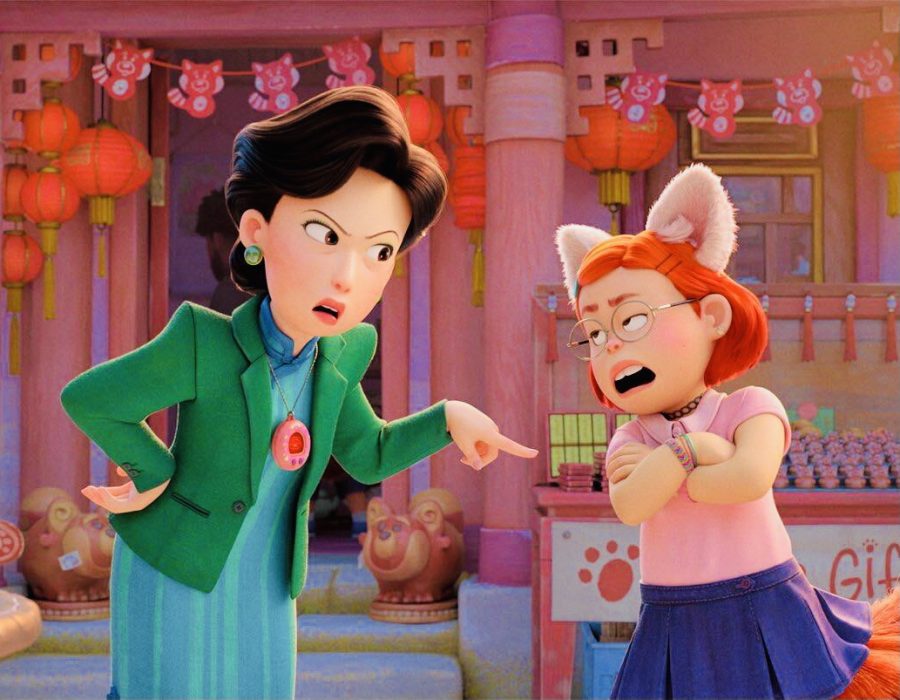Turning red is a turning point in coming-of-age films
Turning Red is one of Disney’s most controversial films; it’s also one of my favorites. The coming-of-age Pixar film follows Chinese-Canadian girl Meilin and her journey through adolescence, but with an unusual twist: she’s been bewitched by a generational curse that causes her to turn into a giant red panda under moments of emotional intensity. The film’s unabashed coverage of traditionally more stigmatized topics, such as menstruation and cultural conflict between community and identity, has made it stand out among the wide breadth of coming-of-age films.
Turning Red unapologetically illustrates that puberty, in all of its messiness, isn’t anything to be ashamed of. Meilin’s sexual maturation is also characterized by awkward, clumsy instances of sexually charged thoughts and actions, a welcome change from that same collectedness. The scene where Meilin’s mother bursts into the bathroom equipped with sanitary pads and overbearing questions is the first time I’ve ever seen periods even mentioned in a Pixar film, although it’s a real, daunting part of many young teens’ lives. Meilin’s defiant claim of “my panda, my choice” is likely a nod to the slogan “my body, my choice” that is often used regarding women’s abortion rights, and also signifies boundaries set by Meilin around her autonomy as she discovers who she is, and who she wants to be. While some berate its inappropriateness for young children, I found it gratifying: teens should never feel as if puberty and maturing are isolating or ostracizing phenomena. Instead of treating teenage development as a mere blip between childhood and adulthood, “Turning Red” depicts it as an independent journey of exploration and growth.
In addition to the physical aspects of growing up, one of the most relatable aspects of the film is the struggle between Meilin’s self-identity and her cultural heritage. The cure to her red panda problem is to undertake a ritual that suppresses intense emotions like aggression, passion, and happiness. This situation, also seemingly silly, is representative of bigger cultural themes: East Asian cultures often emphasize the health and interconnectedness of a community as a whole, contrasting the individualism in Western society. Growing up, many East Asian people, including myself, were raised in an environment that taught us to conceal and control our emotions. The pressure on Meilin to give up large aspects of her personality for the sake of appearing more tame is a nod to the real-life pressure many Asian teens experience. The biggest choice she makes in the film is to keep her red panda despite her mother’s wishes, breaking the generational cycle of suppression that’s plagued her family for generations. In the process, she teaches us that embracing all aspects of oneself is a healthy step towards growth and maturity.

Some critics claim that “Turning Red” is too specific to be palatable to a general audience, which is an unconvincing argument once you watch the actual movie. When reviewing the film, Cinema Outlet’s editor Sean O’Connell wrote that “The target audience for this one feels very specific and very narrow. If you are in it, this might work very well for you. I am not in it. This was exhausting.” However, the claim that a movie that discusses sexual maturation or menstruation isn’t relatable enough doesn’t make sense because the majority of people go through these changes. Adolescence, with all its turbulent ups and downs, is not an experience specific to Meilin. Admittedly, the cultural elements of the film that include conflict between Meilin’s community and identity is not an experience shared by every viewer, but if the film focused on appealing to all demographics, it would become predictable and uninteresting. The portrayal of the struggle sends recognition to the many East Asian teens dealing with this struggle, often in silence.
This blending of both universal and more niche topics is what makes the film so riveting, as well as its rich depiction of growing up as a teen that many viewers will resonate with. “Turning Red” has become a turning point for both Asian representation and teenagers in film, and we should embrace the bold direction it’s taking us in.


Chloe is a senior, but still doesn’t really feel like one. One thing she’s proud of are her spotify playlists, which include every genre imaginable (yes, even country). Outside of the journ room, she loves taking long drives, writing, and thrifting.










